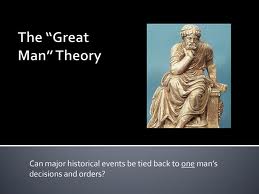
The history of the global fast food company started with two brothers Richard and Maurice McDonald opening the very first McDonald’s restaurant in California, USA in 1940. Franchising began for McDonald’s in 1953, and four restaurants were opened in the same year. The joining of Ray Kroc in 1954 proved to be a turning point for the company and McDonald’s began franchising their restaurant outside of their hometown as well. The sale of 100 millionth hamburger for McDonald’s in 1958 was followed by the opening of 100th restaurant the year after. Ray Kroc buys McDonald’s from founding brothers in 1961 and after two years the company sells its billionth hamburger and opens its 500th franchise in Ohio. Initial overseas McDonald’s opened in Canada and Puerto Rico in 1970. In 1971 McDonald’s expanded to Japan, Netherlands, Germany and Australia. McDonald’s revenues reached $1 billion and 2000th restaurant opened in 1972. And it was followed by the invention of Quarter Pounder and Egg McMuffin and opening franchise in Stockholm. The years of 1974 and 1975 witnessed the expansion of McDonald’s to the United Kingdom, opening of the first Ronald McDonald House and introduction of Drive-Thru. Also, the company expanded to Japan and Singapore and Happy Meal was introduced during the remaining part of the 1970’s. During 1980’s McChicken sandwich and Chicken McNuggets were introduced and restaurants were opened in Philippines, Malaysia, Italy, Mexico, Belgrade, Yugoslavia, Budapest and Hungary. McDonald’s continued worldwide expansion during 1990’s opening shops in Moscow, China, Africa, Morocco, Saudi Arabia, South Africa, Belarus, Peru, India and Georgia. Difficult time began for McDonald’s in 2000’s starting with the launch of a book called Fast Food Nation written in 2001 by Eric Schlosser which criticised McDonald’s for selling unhealthy food. It partially resulted in the first quarterly loss in company’s…

Today the fast food industry is booming in many countries of the world and in the UK due to a range of reasons including their relative cheaper price, convenience of purchasing and consuming, and lack of time of people for “proper” dining. Although fast food does provide value for consumers in terms of convenience, price, and in some cases taste, these values cannot compensate the damage to the health of consumers fast food does. The fast food culture is well embraced by the population in UK. Brown (2005, p.3) informs that fast food industry in UK has an annual turnover of £7.2 billion, earned by serving 1.5 billion meals a year in 20000 outlets, employing nearly 200000 staff. The UK fast food market is reported to be “double the size of Germany, and three times the size of the French Market” (Humphries, 2010). According to Wikipedia (online, 2010), UK was the country with the largest number of fast food restaurants per person worldwide with Australia in second, and the United States in third places in 2008, and 25 per cent of all fast food restaurants were situated in England alone. A study in the same year found that “45% of people in UK were more likely to agree that they liked the taste of fast food to give it up” (Fastfoodnation-online, 2010). Moreover, recent financial crisis has fuelled 8 per cent growth in fast food industry in UK (Kuhn, 2009). Fast food menu in UK mainly includes burgers, pizza, chicken, sandwiches, fish and chips, curry, Chinese takeaways and others. Main players in UK fast food industry are McDonald’s, Burger King, Pizza Hut, Pizza Express, KFC, Chicken Cottage, Subway, Starbucks Coffee, Costa, Pret A Manger, EAT, Coffee Republic, Mr Cod and others. The Food and Drink Innovation Network (online, 2010) 95…
By John Dudovskiy
Category: Industry Analysis

HTC Corporation (formerly known as High Tech Computer Corp.) is a Taiwan-based smartphone manufacturing company engaged in design, development, manufacturing and sales of mobile computers, personal digital assistant phones, touch phones and smart phones and offers its products in Europe, Asia pacific, North and Latin America, Africa and Middle East (Bloomberg, 2010). The company has gained a reputation in terms of innovation related to the features of their products as well as their design The Evolution of HTC HTC was founded in 1997 by three business people and technology enthusiasts Cher Wang, HT Cho and Peter Chou. The founders took the roles of Chairwoman, Director of Board and Chairman of HTC Foundation, and President and CEO respectively. At the initial period of business HTC was mainly involved in partnerships with companies like Compaq, Dell and HP designing and building PDAs (personal digital assistants) for them. The most innovative and acclaimed products of these brands HTC was closely involved in include Compaq iPAQ, Treo 650, O2 XDA, and Orange SPV (Hi, we’re HTC, 2010) The company was introduced to the public as an independent brand starting from June 2006, and manufactured its first own brand product HTC Touch, which is claimed to be by the company a first finger-friendly touch-screen smartphone in June 2007. Today HTC boasts with its popular products as Touch Diamond, Hero, HD2, HD Legend, and Desire, and has been ranked by Business Week as the second best performing technology company in Asia in 2007, and third place in Business Week Global listing in 2006. Internal and External Factors that Affected the Evolution of HTC There are set of internal and external factors that have affected to the evolution of HTC. One of the main internal factors that have affected the evolution of HTC does relate to…
Regardless of type of the business the strategy of running it has changed dramatically in a way that nowadays, the increasing role and impact of internal and external factors to the business have to be taken into account. This fact produces extra challenges for strategic level managers, because they need to focus on creating competitive edge for the business, at the same time when globalization affects all aspects of the business including its strategic direction, supply-chain, value-chain, competitive advantage etc. While this new business environment is seen as challenging by some business executives, others have transformed challenges globalisation offers into competitive advantages of their businesses.

Brown (2006) insists that two forms of literature need to be reviewed: conceptual literature and research literature. Conceptual literature is a type of publication that has been written by the respected authorities in the industry. It contains theories ideas and experiences and is often published in the forms of research articles and books. A wide range of conceptual literature has been reviewed for the dissertation. Most respected authorities in the field if personal finance in general, and in the field of personal loans in particular the works of whom have been used in the research include Modigliani, Butterworth, Debelle, DeVaney, Lytton, Durand and others. Research literature, on the other hand gives information about researches that have been conducted in the field of the research topic and usually is presented in the forms of papers and reports. A number of research literature have been used in the course of the literature review for the dissertation. References Brown RB, 2006, Doing Your Dissertation in Business and Management: The Reality of Research and Writing, Sage Publications
By John Dudovskiy
Category: Literature Review

Brown (2006) maintains that the evaluation of the literature review needs to be undertaken on the basis of the following five criteria: 1. Purpose of the publication. The purposes of all of the publications reviewed as a part of the literature review have been identified in comprehensively. 2. Scope of the research. Before using a source as a secondary data for the dissertation its scope has been identified by establishing in what depth a particular article covered the issues associated with personal debts. Accordingly, the articles that did not cover the research questions in sufficient depths have not been mentioned in this chapter of the dissertation. 3. The authority of the publication. The authority of the publications and the credentials of authors have been taken into account when an article relating to the research questions have been critically reviewed. Especially, the authority of the articles available from the internet has been scrutinized greatly in order to provide the validity of the secondary research findings. Specifically, the articles from the web-sites, such as Wikipedia.org with no known authors, have not been used in the literature review. 4. Audience of the publication. Also, to whom the article was intended to was taken into account when analysing articles in terms of their inclusion in the literature review. For example, the articles written by financial institutions intended for their potential customers have not been used in the literature review. 5. Format of the information. The way information was presented in the article has also played a role in their inclusion in the literature review of the dissertation. References Brown RB, 2006, Doing Your Dissertation in Business and Management: The Reality of Research and Writing, Sage Publications
By John Dudovskiy
Category: Literature Review

I. Introduction Activities undertaken by companies can be divided into two groups: its daily usual business operations and projects that are devised and implemented in order to achieve a specific objective, usually measures and activities that will assist in profit maximisation in short or/and long-term perspective. Nowadays project management is used by companies not only to achieve a specific objective like building a new facilities or introducing a new software, project management as also being used as an efficient tool to achieve strategic objectives of a company. This first part of the report analyses the reasons as why organizations are using project management in order to achieve their strategic objectives. It starts with the introduction of the problem and a brief analysis of the evolution of project management in order to study the background of the issue. Then the importance of project management in achieving strategic objectives is discussed together with the challenges likely to occur in linking project management and organizational objectives. II. The Evolution of Project Management The analysis of the evolution of project management gives us necessary knowledge and perspective required to assess the role of project management in achieving strategic objectives in a due manner. Project management started as a tactical method mainly used to facilitate the completion of individual projects and initiatives such as introducing new software, initiating a new program or creating a new system. The beginning and popularization of project management is widely linked to the major work of Drucker “The Practice of Management” (1954). According to Panico (2002), from the 1940’s through the 1980’s PM was mainly thought to be a practice used by people working in engineering, construction and military. The Development of modern project management can be divided into following four periods (Azzopardi, 2010): 1. The period before 1958 when…

Integrated Marketing Communications is described as “a concept of marketing communications planning that recognizes the added value of a comprehensive plan that evaluates the strategic roles of a variety of communication disciplines and combines these disciplines to provide clarity, consistency and maximum communications impact” (Belch and Belch, p.22 ). Integrated Marketing Communication in explained by Lee (1996, p.34) as ‘a new way of looking at the whole, where once we saw only parts such as advertising, public relations, sales promotion, purchasing, employee communication, and so forth, to look at it the way the consumer sees it – as a flow of information from indistinguishable sources’ Iacobucci and Calder (2003, p. ) specify the difference of integrated marketing from the traditional marketing by the fact that the main focus of the integrated marketing is on on-to-one marketing, relationship marketing or database marketing. This idea is supported by Schultz et al (1993, p.) who claim the main attention of integrated marketing to be on communication. The benefits of the Integrated Marketing Communications is listed in MMC Learning (online, 2010) as the following: • Integrated Marketing Communications initiates and maintains communication with customers. This leads to the increased level of customer satisfaction and the consolidation of image for the company; • The level of customer loyalty can be increased significantly through the use of Integrated Marketing Communications due to the strong bond between customers and the company it creates. • Increased level of profitability can be resulted by the use of the Integrated Marketing Communications due to the fact that the latter increases the overall efficiency of the company. • Messages sent to the customer through Integrated Marketing Communications are usually more consistent and this increases its credibility • Duplication of marketing and other efforts are eliminated in Integrated marketing Communications, therefore company…

Marketing communication is a crucially important component of any business practice. A company may produce high quality products or offer superior services at an attractive prices, however if an efficient marketing strategy is not in place, potential customers would not know about these products and services, therefore the business loses potential revenues. Moreover, in today’s highly competitive marketplace in any industry this way the business may go bankrupt as well. As it has been noted, “marketing communications is anything your organisation does that affects the behaviour or perception of your customers” (Callen, 2009, p.2). “Setting marketing communications objectives is important because: it acts as a means of assessing how best to build ongoing dialogues with audiences in order to maintain brand narrative and sustain competitive advantage; it provides a check in the use of marketing resources in the process of communicating; and it provides some arbitrary mechanism for evaluating the progress and cost of deploying these resources against budgets, previous campaigns and the competition” (Dahlen et al, 2009, p.93). According to Egan (2007) marketing communication objectives can be classified into three broad categories: Knowledge-based objectives. This form of marketing communication objectives aim to stimulate awareness and interest, as well as obtain attention. Feeling-based objectives. These categories of marketing objectives aim at creating positive associations and values with a brand and contribute to the development of the brand identity. Action-based objectives mainly concentrate on the volume of sales through building and maintaining strong customer relationships. Various factors will determine the combination of marketing communications strategies implemented and will also depend on other factors ranging from the type of industry to the actual target market. Ignoring these factors and simply executing strategies on a whim without careful analysis can lead to an unsuccessful launch or flood of problems on the international industry. It…

Heilbrunn (1994, p.65) divides scientific study of leadership into three phases: 1. 1900 – World War II. Researchers attempt to identify traits of leaders in order to study charisma. 2. World War II – 1970s. Main focus of leadership researches are behaviour of leaders. 3. 1970’s – present (date of publication). Interaction between leaders and followers are being studied. Focusing on the traits associated with great leaders, Frank (1993, p.382) informs that earliest studies of leadership had theoretical underpinning which stated that leaders are born, not bred and this research prevailed throughout the first half of the 20th century. Woods (2005, p.1103) informs that early approaches to the topic of leadership highlighted personality traits of key people as critical, which serves as a basis for The Great Man Theory. The Theory advocates the notion of ‘born leaders’, insisting that great leaders possess special skills, intelligence, trait and characteristics, which allow them to take competent decisions and lead the rest of the crowd, whatever a situation or environment might be. However, Adair (2007) informs that “Great Man Theory” has been found invalid in 21st century as nowadays, the majority of business researchers and practitioners believe that anyone can learn leadership skills and abilities with the presence of sufficient level of motivation. Parks (2005, p.4) informs that traditional understandings of leadership up to now have focused on personality characteristics, situation analysis and transaction of power and influence, but brands the notion of born leaders as inadequate, claiming that, at present, growing consensus among leadership theorists justify her stand. Various authors have offered their opinions regarding the fundamental essence of leadership. For instance, it has been stated that “fundamental core of global leadership consists of self-awareness, engagement in personal transformation, and inquisitiveness” (Mendenhall, 2008, p.54) References Adair, J, 2007, Effective Leadership Development, Chartered…
